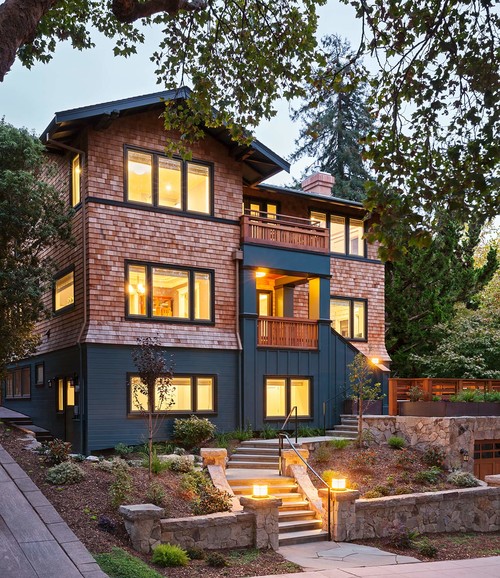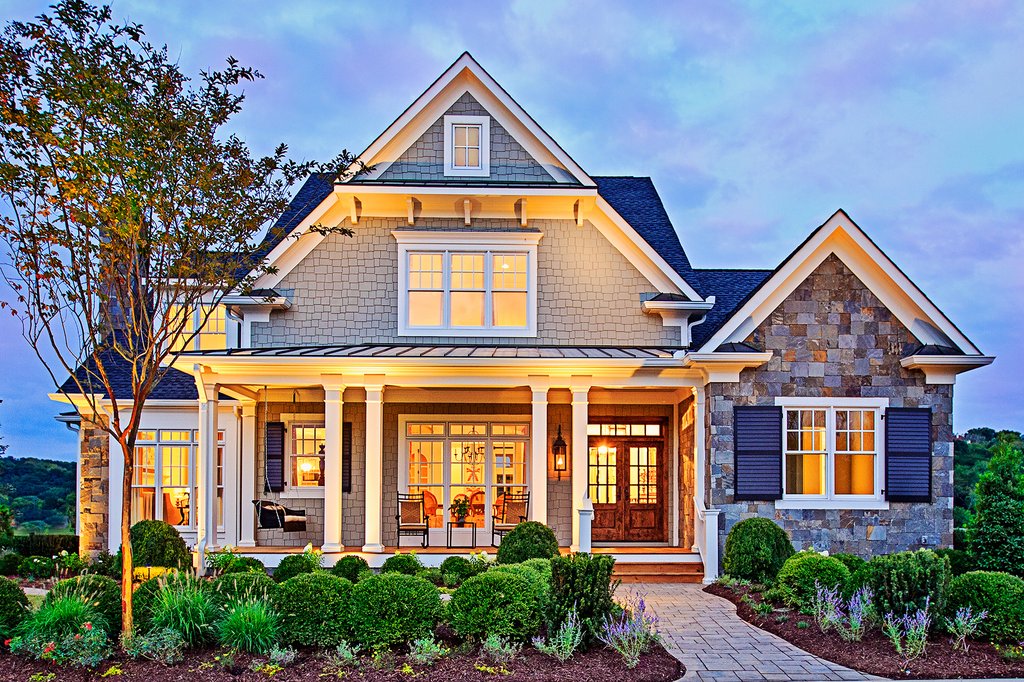How Architectural Solutions Transform Residential Architecture Into Stunning Living Areas
Architectural services considerably influence residential architecture, converting fundamental structures right into phenomenal living spaces. Architects approach each project with a distinct point of view, focusing on site analysis and client vision. They use innovative layout devices to develop useful formats and enticing visual appeals. This transformative process involves much more than visual appeal. It elevates inquiries regarding sustainability, personalization, and the developing needs of homeowners. What key components add to this change?
The Function of Architects in Residential Style
Several house owners visualize their perfect living rooms, the role of designers in residential style is vital for changing these visions into fact. Architects bring a special mix of creative thinking and technical knowledge, ensuring that the style straightens with the property owner's needs while adhering to neighborhood building codes and guidelines. They conduct complete site analyses, taking into consideration factors such as topography, climate, and area context, which influence the style's usefulness and sustainability.
Additionally, engineers equate abstract concepts right into tangible plans, making use of sophisticated software application to develop detailed blueprints and 3D designs. Their joint approach typically entails involving with customers throughout the process, refining designs to better fit the house owner's way of living and choices. Ultimately, architects function as both enthusiasts and trouble solvers, stabilizing visual desires with practicality, to create spectacular and practical living areas that reverberate with the passengers' demands.
Innovative Design Concepts for Modern Living
Architects play a critical function not only in realizing property owners' visions however likewise in pushing the boundaries of what modern living can encompass. Innovative design concepts are increasingly shaping residential style, mixing aesthetic appeals with sustainability and functionality. Open flooring strategies, defined by fluid spaces, foster connection and versatility, enabling households to engage with each other in an unified environment. Incorporating biophilic design, which emphasizes natural environments, enhances wellness and develops a sense of serenity within the home. Smart home technology is an additional trademark of contemporary style, effortlessly integrating ease and energy performance right into every day life. In addition, modular and versatile furnishings options allow citizens to personalize their living spaces according to their progressing needs. These ingenious concepts not only boost the visual appeal of homes however also produce an experience that prioritizes convenience, sustainability, and a link to the surrounding atmosphere, redefining modern living for today's homeowners.
Enhancing Capability and Flow in Home Layouts
Just how can house owners achieve a smooth blend of capability and flow in their living rooms? Architectural services play an essential function in this endeavor by maximizing layouts that promote simplicity of movement and access. By thoughtfully preparing spaces and making sure that connections in between spaces are smooth, designers can develop an unified environment.
Integrating open layout usually improves connectivity, enabling natural light to filter with and producing a feeling of space. Strategic positioning of furniture and fixtures even more supports a reliable use room, ensuring that each area serves its function without feeling cramped.
Furthermore, engineers take into consideration traffic patterns, suggesting paths that minimize obstacles and promote a rational sequence of activity throughout the home. By balancing visual appeals with useful layout components, architectural services allow house owners to appreciate living rooms that are not only aesthetically enticing yet likewise extremely functional, enhancing the total experience of daily life.
Sustainable Practices in Residential Architecture
Sustainable techniques in property design concentrate on the assimilation of eco-friendly products and energy-efficient services. By prioritizing these components, designers can create homes that not just decrease ecological impact yet likewise improve the well-being of their owners. This technique shows an expanding commitment to sustainability within the sector.
Eco-Friendly Products Usage

Power Performance Solutions
While several property owners seek aesthetic charm, energy effectiveness has actually come to be an important concern in household style. Architects significantly focus on lasting techniques by incorporating innovative energy-efficient services into their styles. These services include appropriate insulation, energy-efficient home windows, and strategically placed photovoltaic panels, all aimed at lowering energy consumption. Additionally, find more information contemporary home heating and cooling systems, such as geothermal and solar-powered options, add to minimizing environmental effect while making best use of convenience. Natural air flow and daylighting strategies are utilized to improve indoor air top quality and lower dependence on synthetic lighting. By taking on these energy-efficient methods, architects not just profit property owners economically via decreased utility expenses but additionally support broader sustainability objectives, making sure that living spaces are both stunning and ecologically responsible.
Boosting Visual Allure and Outdoor Spaces

Thoughtful placement of exterior attributes, such as outdoor patios, decks, and pathways, develops inviting areas for relaxation and mingling. These elements are created to move seamlessly from the inside, urging a link between indoor and exterior living.
Architects also emphasize the importance of lights-- both useful and decorative-- to highlight architectural details during the night, more boosting the home's attraction. craftsman style house. Overall, these methods not only boost the visual worth of a home however likewise raise its bankability and satisfaction for residents and visitors alike
Personalizing Interiors to Mirror Customer Lifestyles
Personalization is key in developing insides that resonate with customers' way of livings and preferences. Architects and developers participate in complete examinations to comprehend individual demands, making certain that each area reflects the home owner's identification. This process often consists of evaluating daily regimens, hobbies, and family members dynamics, which aids in crafting practical yet cosmetically pleasing atmospheres.
Incorporating individual elements, such as art work, color pattern, and furnishings options, permits a cohesive design that really feels uniquely tailored. For instance, a home office might feature ergonomic home furnishings and motivating design that satisfy a professional's operations, while a living room might prioritize convenience and enjoyment alternatives.
Additionally, lasting materials and cutting-edge innovations can be incorporated to line up with customers' values and see here ambitions. Ultimately, personalization changes common spaces right into vibrant, livable locations that enhance the general quality of life, read making each home a true representation of its inhabitants.
Often Asked Concerns
How Much Do Architectural Provider Typically Expense for Residential Projects?
Architectural solutions for residential jobs normally vary from 5% to 15% of the complete construction budget. Aspects affecting prices consist of task complexity, location, and the architect's experience, affecting overall pricing structures in the industry.
What Is the Typical Timeline for Finishing a Residential Layout Task?
The regular timeline for completing a residential style task differs yet typically extends from a number of months to over a year, affected by elements such as job complexity, customer decisions, and the allowing process.
Exactly How Do Architects Team Up With Service Providers Throughout Building and construction?
Architects team up with specialists with regular interaction, sharing style specifications and addressing obstacles. This collaboration guarantees that building and construction abides by the architectural vision, enhancing both functionality and visual appeals while accommodating any kind of required adjustments throughout the building procedure.

What Prevail Mistakes House Owners Make When Hiring a Designer?
Home owners commonly overlook the significance of clear interaction regarding their vision, stop working to look into an architect's portfolio and experience, and disregard to develop a reasonable budget plan, which can lead to misunderstandings and poor outcomes.
Can Architects Assist With Acquiring Essential Permits and Approvals?
Architects possess expertise in guiding through the complex landscape of licenses and approvals. They assist in interaction with neighborhood authorities, making certain compliance with policies, which improves the process and lessens hold-ups for house owners starting building and construction tasks.